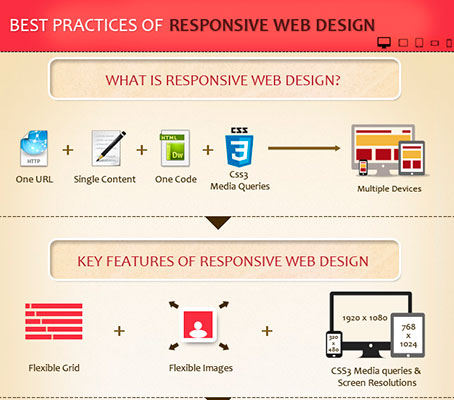Annoyed With Sluggish Loading Times And Confusing Navigating? Discover Exactly How Responsive Design And Optimized Page Speed Can Enhance Your Website'S Customer Experience
Annoyed With Sluggish Loading Times And Confusing Navigating? Discover Exactly How Responsive Design And Optimized Page Speed Can Enhance Your Website'S Customer Experience
Blog Article
Web Content Writer-Lamont Sahin
Have you ever before visited a web site that took forever to load, had a complex navigating system, or really did not present properly on your mobile device? Possibilities are, you promptly deserted that website and moved on to one that gave a far better individual experience.
In today's competitive online landscape, it's important for companies to prioritize website design that boosts user experience in order to drive far better conversions. In this conversation, we will discover the value of receptive design, the application of instinctive navigation, and the optimization of page lots rate to create a seamless and interesting individual trip.
Remain tuned to discover exactly how these elements can substantially affect your internet site's success.
Importance of Responsive Layout
Receptive design is important in today's electronic landscape for producing sites that adjust seamlessly to various screen sizes and tools. When https://www.business2community.com/digital-marketing/4-tips-for-a-strategic-cpg-digital-marketing-campaign-and-the-trends-to-back-them-up-02443305 is receptive, it immediately changes its layout and web content to fit any type of gadget, whether it's a smartphone, tablet computer, or desktop. This is vital due to the fact that increasingly more people are accessing the web via their mobile devices.
If your site isn't receptive, it can lead to a poor individual experience. Users might need to pinch and zoom to review web content, buttons might be too tiny to click, and pictures might not be optimized for smaller screens. This can discourage users and cause high bounce prices and reduced conversions.
Using Intuitive Navigation
When making a responsive internet site, it is essential to concentrate on utilizing instinctive navigating for an enhanced user experience.
User-friendly navigation refers to arranging your web site's menu and navigating elements in a rational and straightforward method. By doing so, you make it much easier for site visitors to find what they're searching for and browse through your site easily.
User-friendly navigation helps reduce confusion and irritation, eventually leading to much better individual interaction and raised conversions.
To achieve intuitive navigating, take into consideration making use of clear and detailed labels for your food selection items, implementing a consistent design across all web pages, and integrating search performance for fast access to particular web content. In addition, it's critical to focus on important pages and information, ensuring they're prominently shown and easily available.
Optimizing Page Load Rate
To boost user experience, it's important to enhance the page load speed of your internet site. Sluggish filling times can annoy users and bring about higher bounce rates.
The good news is, there are numerous techniques you can apply to boost your web site's load speed. Firstly, take into consideration decreasing the size of your photos by pressing them without jeopardizing quality.
Additionally, enhance your code by minimizing unnecessary manuscripts and CSS data. visit the next internet site is to take advantage of browser caching, which enables specific components of your web site to be stored in your area, lowering tons times for returning site visitors.
Furthermore, think about using a web content shipment network (CDN) to distribute your site's data throughout numerous web servers, enhancing load speed for users in different geographical locations.
Conclusion
To conclude, by employing responsive layout, user-friendly navigation, and maximizing page lots rate, website design can substantially improve individual experience and drive much better conversions.
With an user-friendly user interface, simple navigating, and fast loading times, sites can record and maintain the focus of users, resulting in increased involvement and higher conversion rates.
So, do not postpone in carrying out these web design strategies to ensure a smooth and effective customer experience!
